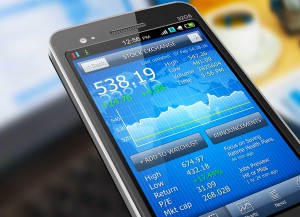The Dow Jones is on a rollercoaster – But don’t panic, writes…
Arturo Bris, IMD Business School
We have been talking about this for the last 12 months: when will financial markets realise that the amazing performance of 2017 was not sustainable?
When will stock markets adjust? 
Are we approaching the next big market crash?
When will the bubble burst?
Apparently, we now know the answer.
A little more than a month into 2018, the Dow Jones industrial average suffered its largest drop by volume in history on February 5.
Other markets across the world followed suit.
What is even worse, the CBOE VIX index, which tracks market volatility and which was displaying worrisomely low levels, marked its biggest single-day jump of all time (84%).
The drill is: the higher the volatility, the lower the stock market performance.
Only one week ago, the financial press was reporting “confidence” and “optimism” at the recent World Economic Forum annual meeting in Davos.
Major geopolitical risks remain – it was said – but overall the world economy will display significantly higher growth rates than in the past, possibly dominated by Asia, in general, and China in particular.
The scary thing is that the Davos participants reached the same conclusion about the world economy in January 2007.
However, I don’t think that we are today in the same situation we were at the beginning of 2007.
There are three reasons why.
1. We’ve been here before
First of all, market adjustments of the magnitude just suffered are not unseen in financial markets.
Between 1987 and 2018, the Dow Jones suffered declines of 4% or greater 37 times – that is more than once a year.
Even considering the period following the 2007-08 financial crisis, the Dow has declined more than 4% once a year.
The Nasdaq index is even more volatile: between 2002 and 2018, it has fallen 4% or more 176 times, or almost ten times a year.
And after the financial crisis, the Nasdaq suffered similar such negative returns on 52 occasions.
2. No real news
More importantly, we have not had important economic news which would justify an impending market crash. Panics happen when markets rise irrationally, as happened during the dotcom bubble. The recent rise in the market has not been irrational.
All market participants, even if marginally informed, should be aware that market performance in 2017 was stellar and in line with corporate earnings and expectations of future growth.
I believe a severe market correction will be associated with either geopolitical events, such as wars or terrorism, or to decisions of economic policy that will not be welcome by financial markets. Neither one has happened.
Besides Donald Trump’s tax reform (which should benefit company earnings), the US administration has not made any other big decisions yet.
3. Fundamentals are solid
Finally, the fundamental properties of both the companies that saw a selloff in their stocks, as well as the wider economy, remain solid.
We are returning to positive and significant economic growth rates, fuelled by Asia, but also accompanied by good perspectives in Europe and the United States. Corporate earnings are excellent, with reports that profitability in the US corporate sector were at their best in the last 17 years.
On average, 78% of all companies had beaten market expectations regarding earnings growth.
The price-earnings ratio, which is a measure of how expensive stocks are (and indicates whether stocks are overvalued), in most markets has only been slightly higher than the historical average – and much lower than it was in 2006. 
This reinforces the fact that the fundamentals of most companies are not overinflated.
![]() Does this mean that we should expect a rapid market readjustment and that we will enjoy a happy and bullish stock market in 2018?
Does this mean that we should expect a rapid market readjustment and that we will enjoy a happy and bullish stock market in 2018?
Not necessarily.
The major risks of the world economy remain: China and its massive private debt levels; geopolitical risks, such as tensions between the US and North Korea; increasing levels of income inequality and the potential for subsequent social unrest; and terrorism as a source of global instability.
Stock markets are not necessarily pricing such risks – so, if and when they materialise, we will have our serious crash.
For now, though, it is too late to buy, but too early to sell.
Arturo Bris, Professor of Finance, IMD Business School
This article was originally published on The Conversation. Read the original article.

No comments:
Post a Comment